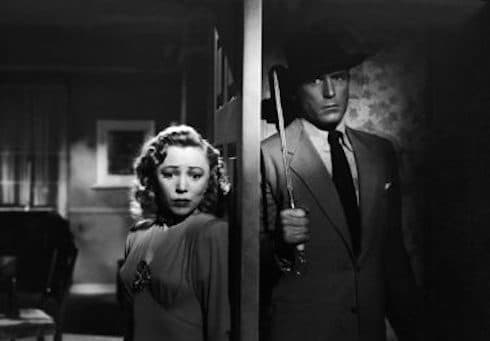Guillermo del Toro Wants You To See These Films
The Museum of Modern Art offers the director ‘Carte Blanche’ to show some favorite pictures March 16-26 in conjunction with an exhibition devoted to his recent adaptation of ‘Pinocchio.’

Given the go-ahead to curate a series of favorite films, what self-respecting movie fan wouldn’t jump at the chance?
The Museum of Modern Art has been granting that enviable challenge to notable denizens in the arts since 2009. The list of invitees has been eclectic: from celebrated foodie Dieter Kosslick and postmodernist doyenne Cindy Sherman to science fiction writer Samuel R. Delany and organizations like the Women’s Film Preservation Fund.
The latest figure to whom MoMA has granted a free hand is Guillermo del Toro, the director of, among much else, “Pan’s Labyrinth,” “The Shape of Water,” and “Crimson Peak.”
“Carte Blanche: Guillermo del Toro” runs March 16-26 and has been mounted in conjunction with “Guillermo del Toro: Crafting Pinocchio,” an exhibition devoted to the development and realization of his recent adaptation of the classic children’s book. Given Mr. del Toro’s fondness for monsters and the otherworldly, you’d think he’d stack the deck with horror and fantasy movies, but “Carte Blanche” reveals a temperament that is fairly catholic in its taste.
Which isn’t to say the things-that-go-bump-in-the-night school isn’t accounted for. At the top of the list is “Haxan” (1922), Swedish director Benjamin Christensen’s didactic accounting of the history of witchcraft and its corresponding psychoanalytic stereotypes. Don’t let the year of the film’s release fool you into thinking that it trades in outdated scare tactics. Christensen poached upon Bruegel and Goya for inspiration, and the results are alternately flamboyant, pitiless, and savage. As an exegesis on witchcraft, “Haxan” isn’t up to the standard of Carl Dreyer’s “Day of Wrath” (1943), but it comes close all the same.
Do you want auteurs? Mr. del Toro will give you auteurs, including Alfred Hitchcock (“The Wrong Man”), Orson Welles (“The Trial”), and Luis Buñuel (“Nazarín”). Mitchell Leisen isn’t quite in that league, but he was a capable director all the same. “Easy Living” (1937), with a script by Preston Sturges, is a solid screwball comedy whose main attraction is Jean Arthur, an actress who has largely been lost to popular memory. Smarter than Katharine Hepburn and sexier than Marilyn Monroe, Arthur deserves a retrospective of her own.
As the man who had the chutzpah to remake “Nightmare Alley” (1947), Mr. del Toro knows his film noir back-to-front. For “Carte Blanche,” he’s chosen “Born to Kill” (1947), starring Claire Trevor, Lawrence Tierney, and the redoubtable Elisha Cook Jr. The picture is among the earlier efforts by Robert Wise — yes, the future director of “The Sound of Music” — and has the rare distinction of having the story centered on a femme who is distinctly more than fatale.
Upon its release, “Born to Kill” was met with critical opprobrium. The Times dismissed it as a “smeary tabloid fable,” a film “designed to pander to the lower levels of taste.” Other critics panned it as “unsavory,” with a story that “contains enough killing for anybody, but furnishes less than adequate reasons for it.” Would it be overstating the obvious to note that these descriptions are (a) on the money and (b) exactly the reasons contemporary viewers will enjoy the picture?
We first meet Helen Brant (Claire Trevor) as she exits a Reno courthouse, newly divorced. A brief conversation with her country lawyer reveals a deep streak of cynicism, an attribute that is confirmed when Helen gives notice to her beer-swilling landlady, a loud, crass, and scene-stealing Audrey Long. “Men are turnips,” we learn — except, that is, for Sam Wilde (Lawrence Tierney), whose shoulders are as broad as his psychopathy is deep. Sexual attraction follows suit, as does betrayal, murder, and Walter Slezak at his smarmy best.
Of all Mr. del Toro’s choices, “The Arcane Sorcerer” (1996), also known as “The Mysterious Enchanter,” is probably the least known to general audiences. Fans of giallo, a lurid subgenre of Italian cinema that comes out of Hitchcock, will be familiar with its director, Pupi Avati, the man behind cult favorites like “The House With Laughing Windows” and “Zeder.”
Mr. del Toro has been championing “The Arcane Sorcerer,” as an “incredibly well-researched, pastoral, spiritual horror movie,” for years. New Yorkers will now have the opportunity to gauge if it is, as Mr. del Toro claims, the best film they’ve never seen. At the very least, it will provide additional insight into the aesthetic purview of a most purposeful and peculiar director.

